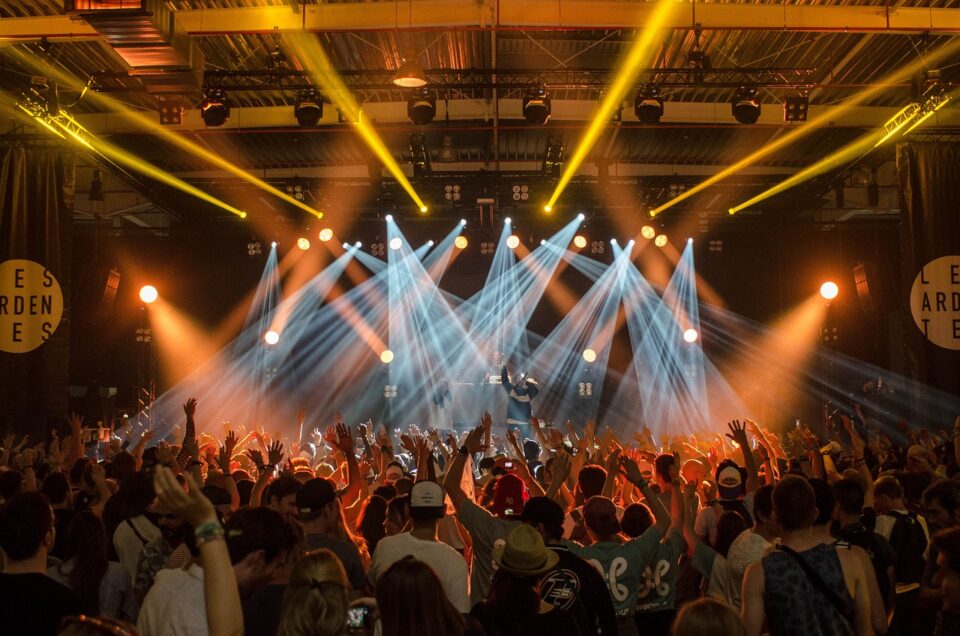Is India’s Music Festival Season a Privilege Only Few Can Afford?
With soaring ticket prices, are India’s music festivals slipping out of reach for the average fan?
As the temperatures cool and the stages heat up, India’s music festival season arrives with a line-up that’s bigger and more international than ever. High-profile acts are gracing Indian soil, massive stages are being erected in scenic destinations, and fans are gearing up to immerse themselves in these once-a-year experiences. However, amid all the fanfare, one fundamental question looms: can the average Indian afford to attend these festivals?
The sticker shock is real. Ticket prices for large-scale music festivals in India have surged, often approaching international rates. Premium experiences like meet-and-greets, VIP areas, and exclusive merchandise add a whole other layer of costs. For example, some music festivals charge ₹5,000 to ₹25,000 for basic entry alone, with VIP access adding more zeroes. Add in travel, food, and accommodations, especially if the event is outside your hometown, and the expenses quickly climb into luxury territory.
For music lovers across the country, these prices are a barrier that can turn what should be a shared cultural experience into an exclusive privilege for those who can afford it. Given the average income levels in India, many fans are left wondering if attending these festivals will ever truly be accessible. The demand for music festivals in India is skyrocketing, driven by a combination of factors: growing disposable income among urban youth, the influence of social media, and the appeal of international headliners finally making stops in Indian cities. These festivals aren’t just concerts; they are immersive, Instagram-worthy experiences, complete with art installations, gourmet food options, and stages that rival those of global festivals like Wireless or Rolling Loud.
But this ambition comes at a price, quite literally. To match international standards, organizers are making hefty investments in production, sound quality, artist fees, and venue aesthetics. Yet, the cost is largely borne by the attendees. India’s GST on entertainment events is also a significant factor, which, combined with the costs mentioned above, inflates ticket prices. Unfortunately, this makes festivals inaccessible to a large portion of the audience who would otherwise be eager to attend. In countries where music festivals are a staple of cultural life, subsidies, sponsorships, and community funding often play a role in making them affordable. India, on the other hand, lacks these structural supports. While sponsorships are present, they’re often directed at elite experiences rather than making the overall festival more accessible to the average person.
For Indian fans, the impact of these high ticket prices is personal and poignant. Music festivals aren’t just about entertainment; they represent a rare chance to see global stars in person, engage with local and international music scenes, and connect with others who share their passions. The excitement of seeing an international artist who has rarely, if ever, visited India can be an emotional draw that’s hard to put a price on. But for a fan who earns a modest income or who supports their family financially, the decision to buy a festival ticket is fraught with trade-offs. Young people in particular face a dilemma: spend their savings on a festival experience that may last only a few days, or forgo it entirely to focus on more practical financial goals. In a country where familial expectations and economic constraints are prominent, the decision to prioritize a festival can feel like a luxury that not everyone can indulge in, especially as festivals become more aspirational than accessible.
The silver lining is that India’s music festival scene is not monolithic. While premium experiences at mega-festivals are growing, so are options that cater to niche audiences and local tastes. Festivals centered around indie music, folk traditions, or specific genres like jazz and electronic are emerging as more affordable alternatives to the massive commercial events. These festivals may lack the glitz and glamour of their high-budget counterparts, but they offer more intimate, community-driven experiences that can be just as enriching—without burning a hole in the wallet. Additionally, some of these smaller festivals have even adapted to tiered pricing, allowing attendees to select experiences that align with their budget. The rise of regional festivals has also brought down costs for travel and accommodation, making it easier for fans to attend events in their own cities or states.
There is also hope in the growing trend of brand sponsorships that aim to offset ticket prices. In India, big brands are beginning to sponsor music festivals, offering special deals, discounts, or even free tickets as part of promotional campaigns. While these initiatives may not completely solve the affordability issue, they do provide a few avenues for fans to participate in the festival season without feeling financially strained. The heart of any music festival lies in the audience. If festivals in India want to build lasting relationships with fans, they must find ways to include a wider demographic. Affordability should be seen as an integral part of festival planning, not an afterthought. This could involve early-bird pricing, family or student discounts, and the development of budget-friendly experiences within larger festivals. Additionally, policymakers could play a role by reducing GST on music events or offering grants to make such cultural gatherings more accessible.
Festivals have the power to be transformative experiences, uniting people from all walks of life through the universal language of music. For many Indians, however, these gatherings remain tantalizingly out of reach. Bridging the gap between aspiration and affordability would allow more fans to participate and bring their unique perspectives, experiences, and energy to these events. Ultimately, if India’s music festival industry wants to foster a culture of inclusivity, it needs to find ways to make the season more affordable, accessible, and attuned to the financial realities of Indian fans. Only then can these festivals truly become celebrations of music, culture, and community for all.








